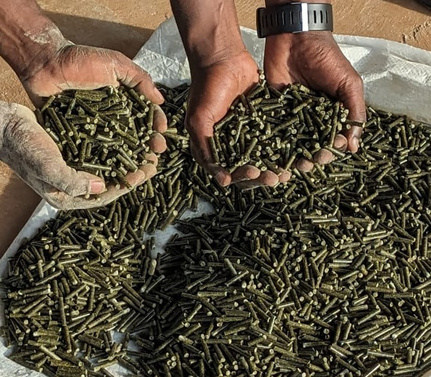KCAD’s Wege Prize announces top five ideas in circular economy created by students from around the world
KCAD's Wege Prize announces top five ideas in circular economy created by students from around the world Ferris State Torch


Projects Targeting Sustainable Development Goals Selected for Wege Prize Finale
May 14, 2024

Introduction
Five innovative projects from around the world, addressing food insecurity, waste/pollution, and resource conservation, have been chosen by expert judges to be presented publicly in mid-May in Michigan as part of the Wege Prize competition.
About Wege Prize
Wege Prize, organized by the Wege Center for Sustainable Design at Kendall College of Art and Design of Ferris State University with the support of The Wege Foundation, is one of the world’s leading competitions for sustainable, circular economy ideas. It aims to ignite game-changing solutions with real-world application and impact.
Importance of Sustainable Development Goals
The Wege Prize competition emphasizes the importance of the Sustainable Development Goals (SDGs) set by the United Nations. These goals address various global challenges such as poverty, hunger, climate change, and responsible consumption and production.
Student Finalist Teams
Each year, five student finalist teams from around the world compete for a total cash prize of $65,000. These teams represent various countries and collaborate across disciplines to develop innovative solutions.
Selected Projects
- EcoFeed Pioneers
The EcoFeed Pioneers team, consisting of students from Rwanda, is revolutionizing animal feed production by integrating protein-rich alfalfa with innovative biorefinery techniques. Their sustainable approach aims to reduce reliance on scarce crops like soybeans and corn.
- Enzymatic Organic Fertilizers
The Enzymatic Organic Fertilizers team, comprising students from China, Denmark, Germany, and Norway, is using microbial engineering and enzymes to convert agricultural waste into organic fertilizers. Their solution aims to minimize environmental impact and reduce the use of chemical fertilizers and pesticides.
- Charcoal Cooling Facilities
The Charcoal Cooling Facilities team from Rwanda is addressing post-harvest losses for tomato farmers and retailers. They are building large, naturally evaporative charcoal cooling facilities using locally available materials to store produce without electricity, reducing food waste.
- Biodegradable Packaging
The Biodegradable Packaging team, consisting of students from Poland and Rwanda, is tackling plastic pollution by transforming food waste into biodegradable packaging. They utilize a circular collection system and Black Soldier flies to break down residual waste into eco-friendly compost and larva protein feeds.
- Senene Farm
The Senene Farm team, composed of students from Costa Rica, the United States, and Tanzania, is combating child malnutrition in Tanzania by increasing the production of the Senene grasshopper, a protein-rich alternative source. They are developing a rearing facility using vertical farming to create a more circular production cycle.
Impact and Collaboration
The Wege Prize competition provides a platform for young innovators to showcase their impactful solutions and their ability to collaborate across boundaries. The selected projects demonstrate the power of collaboration and design thinking in addressing global challenges.
Conclusion
Wege Prize highlights the importance of sustainable development and encourages students to develop tangible solutions for producing and consuming essential goods in sustainable ways. The competition’s focus on the Sustainable Development Goals ensures that these solutions contribute to a more sustainable future.
SDGs, Targets, and Indicators in the Article
1. Which SDGs are addressed or connected to the issues highlighted in the article?
- SDG 2: Zero Hunger
- SDG 6: Clean Water and Sanitation
- SDG 9: Industry, Innovation, and Infrastructure
- SDG 12: Responsible Consumption and Production
- SDG 13: Climate Action
- SDG 14: Life Below Water
- SDG 15: Life on Land
The article discusses projects targeting food insecurity, waste/pollution, and resource conservation. These issues are connected to several Sustainable Development Goals, including SDG 2 (Zero Hunger), SDG 6 (Clean Water and Sanitation), SDG 9 (Industry, Innovation, and Infrastructure), SDG 12 (Responsible Consumption and Production), SDG 13 (Climate Action), SDG 14 (Life Below Water), and SDG 15 (Life on Land).
2. What specific targets under those SDGs can be identified based on the article’s content?
- SDG 2.1: By 2030, end hunger and ensure access by all people, in particular the poor and people in vulnerable situations, including infants, to safe, nutritious and sufficient food all year round.
- SDG 6.3: By 2030, improve water quality by reducing pollution, eliminating dumping and minimizing release of hazardous chemicals and materials, halving the proportion of untreated wastewater and substantially increasing recycling and safe reuse globally.
- SDG 9.4: By 2030, upgrade infrastructure and retrofit industries to make them sustainable, with increased resource-use efficiency and greater adoption of clean and environmentally sound technologies and industrial processes.
- SDG 12.3: By 2030, halve per capita global food waste at the retail and consumer levels and reduce food losses along production and supply chains, including post-harvest losses.
- SDG 13.3: Improve education, awareness-raising and human and institutional capacity on climate change mitigation, adaptation, impact reduction and early warning.
- SDG 14.1: By 2025, prevent and significantly reduce marine pollution of all kinds, in particular from land-based activities, including marine debris and nutrient pollution.
- SDG 15.2: By 2020, promote the implementation of sustainable management of all types of forests, halt deforestation, restore degraded forests and substantially increase afforestation and reforestation globally.
The specific targets identified in the article are related to ending hunger (SDG 2.1), improving water quality (SDG 6.3), upgrading infrastructure for sustainability (SDG 9.4), reducing food waste (SDG 12.3), raising awareness about climate change (SDG 13.3), preventing marine pollution (SDG 14.1), and promoting sustainable forest management (SDG 15.2).
3. Are there any indicators mentioned or implied in the article that can be used to measure progress towards the identified targets?
- Indicator for SDG 2.1: Proportion of the population facing moderate or severe food insecurity
- Indicator for SDG 6.3: Proportion of wastewater safely treated
- Indicator for SDG 9.4: CO2 emissions per unit of value added in manufacturing industries
- Indicator for SDG 12.3: Food loss index
- Indicator for SDG 13.3: Number of countries that have communicated the strengthening of institutional, systemic and individual capacity-building to implement adaptation, mitigation and technology transfer
- Indicator for SDG 14.1: Marine protected areas as a percentage of territorial waters
- Indicator for SDG 15.2: Forest area as a proportion of total land area
The article does not explicitly mention these indicators, but they can be used to measure progress towards the identified targets. These indicators provide specific metrics to track the achievement of the targets.
Table: SDGs, Targets, and Indicators
| SDGs | Targets | Indicators |
|---|---|---|
| SDG 2: Zero Hunger | 2.1: By 2030, end hunger and ensure access by all people, in particular the poor and people in vulnerable situations, including infants, to safe, nutritious and sufficient food all year round. | Proportion of the population facing moderate or severe food insecurity |
| SDG 6: Clean Water and Sanitation | 6.3: By 2030, improve water quality by reducing pollution, eliminating dumping and minimizing release of hazardous chemicals and materials, halving the proportion of untreated wastewater and substantially increasing recycling and safe reuse globally. | Proportion of wastewater safely treated |
| SDG 9: Industry, Innovation, and Infrastructure | 9.4: By 2030, upgrade infrastructure and retrofit industries to make them sustainable, with increased resource-use efficiency and greater adoption of clean and environmentally sound technologies and industrial processes. | CO2 emissions per unit of value added in manufacturing industries |
| SDG 12: Responsible Consumption and Production | 12.3: By 2030, halve per capita global food waste at the retail and consumer levels and reduce food losses along production and supply chains, including post-harvest losses. | Food loss index |
| SDG 13: Climate Action | 13.3: Improve education, awareness-raising and human and institutional capacity on climate change mitigation, adaptation, impact reduction and early warning. | Number of countries that have communicated the strengthening of institutional, systemic and individual capacity-building to implement adaptation, mitigation and technology transfer |
| SDG 14: Life Below Water | 14.1: By 2025, prevent and significantly reduce marine pollution of all kinds, in particular from land
Copyright: Dive into this article, curated with care by SDG Investors Inc. Our advanced AI technology searches through vast amounts of data to spotlight how we are all moving forward with the Sustainable Development Goals. While we own the rights to this content, we invite you to share it to help spread knowledge and spark action on the SDGs. Fuente: ferris.edu
Join us, as fellow seekers of change, on a transformative journey at https://sdgtalks.ai/welcome, where you can become a member and actively contribute to shaping a brighter future.
|








